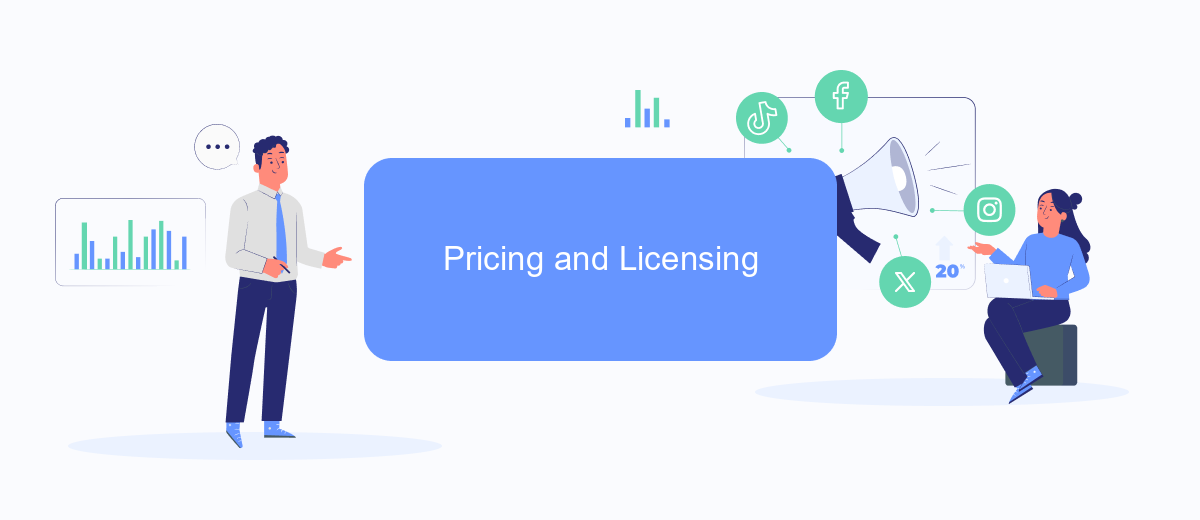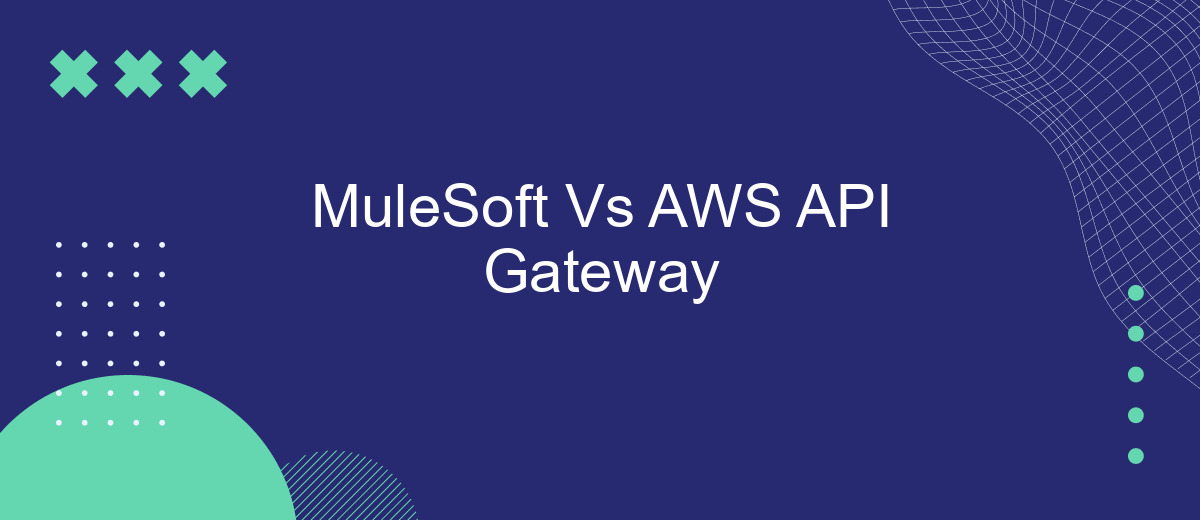In the realm of API management, MuleSoft and AWS API Gateway stand out as leading solutions, each offering unique features and capabilities. This article delves into a comparative analysis of these two platforms, examining their strengths, weaknesses, and ideal use cases. Whether you're a developer or a business decision-maker, understanding these tools can significantly impact your API strategy.
Introduction
In the rapidly evolving landscape of API management, choosing the right platform is crucial for businesses aiming to streamline their integration processes. MuleSoft and AWS API Gateway are two prominent solutions that offer a range of features to facilitate API management and integration. Understanding the strengths and limitations of each can help organizations make an informed decision that aligns with their specific needs.
- MuleSoft: Known for its comprehensive integration capabilities and robust API management features.
- AWS API Gateway: Offers seamless integration with other AWS services and is highly scalable.
- SaveMyLeads: Simplifies the integration process by automating data transfer between various applications and services.
Both MuleSoft and AWS API Gateway have their unique advantages, making them suitable for different use cases. While MuleSoft excels in complex integration scenarios, AWS API Gateway provides a scalable solution for those already leveraging the AWS ecosystem. Additionally, tools like SaveMyLeads can further enhance your integration strategy by automating workflows and reducing manual effort. In this article, we will delve deeper into the features, benefits, and potential drawbacks of MuleSoft and AWS API Gateway to help you make an informed choice.
Features and Capabilities

MuleSoft offers a comprehensive suite of tools designed for integrating various applications, data sources, and APIs. Its Anypoint Platform provides a unified solution for API design, management, and analytics, ensuring seamless connectivity and robust performance. MuleSoft's capabilities include API lifecycle management, data transformation, and extensive support for various protocols and standards, making it a versatile choice for complex integration scenarios. Additionally, MuleSoft's platform is known for its strong security features, including threat protection and access control, which are critical for enterprise-level integrations.
On the other hand, AWS API Gateway is a fully managed service that allows developers to create, publish, maintain, and secure APIs at any scale. It integrates seamlessly with other AWS services, such as Lambda, DynamoDB, and CloudWatch, offering a scalable and cost-effective solution for API management. AWS API Gateway excels in providing high availability, low latency, and automatic scaling. While it may not offer as extensive integration capabilities as MuleSoft, it is ideal for developers looking to leverage the AWS ecosystem. For businesses needing to automate lead generation and data synchronization, services like SaveMyLeads can complement these platforms by providing pre-built integrations and workflows, further enhancing operational efficiency.
Pricing and Licensing

When comparing MuleSoft and AWS API Gateway in terms of pricing and licensing, it's essential to consider the unique pricing models and licensing options provided by each platform.
- MuleSoft: MuleSoft offers a subscription-based pricing model. The cost depends on the number of APIs, the volume of data processed, and the deployment options (cloud, on-premises, or hybrid). Additionally, MuleSoft provides different tiers of licensing, including Gold, Platinum, and Titanium, each offering varying levels of support and features.
- AWS API Gateway: AWS API Gateway uses a pay-as-you-go pricing model. Charges are based on the number of API calls, data transfer out, and optional features like caching. This model allows for scalability and cost-efficiency, especially for fluctuating workloads.
Both MuleSoft and AWS API Gateway offer robust solutions for API management, but their pricing structures cater to different business needs. While MuleSoft’s subscription model may be suitable for enterprises requiring comprehensive support and integration capabilities, AWS API Gateway’s pay-as-you-go model is ideal for businesses looking for flexibility and cost control. For those seeking additional integration solutions, services like SaveMyLeads can further enhance the efficiency of API management by automating data transfers and streamlining workflows.
Use Cases and Best Practices

When choosing between MuleSoft and AWS API Gateway, it's crucial to understand their specific use cases and best practices. MuleSoft is ideal for complex integrations involving multiple systems and applications, providing a robust platform for API management, data transformation, and orchestration. AWS API Gateway, on the other hand, excels in scenarios where serverless architecture and seamless integration with other AWS services are priorities.
For organizations looking to streamline their integration processes, leveraging services like SaveMyLeads can be beneficial. SaveMyLeads automates lead data transfer between various platforms, reducing manual effort and ensuring data consistency. This can complement both MuleSoft and AWS API Gateway by handling specific lead management tasks efficiently.
- MuleSoft: Best for complex, multi-system integrations requiring extensive data transformation and orchestration.
- AWS API Gateway: Best for serverless applications and integrations closely tied to AWS services.
- SaveMyLeads: Ideal for automating lead data transfer between platforms, enhancing integration workflows.
In conclusion, the choice between MuleSoft and AWS API Gateway depends on your specific integration needs and architectural preferences. Incorporating tools like SaveMyLeads can further optimize your integration strategy, making data management more efficient and reliable.
Conclusion
In conclusion, both MuleSoft and AWS API Gateway offer robust solutions for API management and integration. MuleSoft stands out with its comprehensive Anypoint Platform, which provides a unified solution for API design, management, and analytics, making it an excellent choice for enterprises looking for an all-encompassing integration solution. On the other hand, AWS API Gateway excels in its seamless integration with other AWS services, offering a scalable and cost-effective option for businesses already invested in the AWS ecosystem.
Choosing between MuleSoft and AWS API Gateway ultimately depends on your specific needs and existing infrastructure. For those seeking a more extensive integration platform with a wide range of connectors, MuleSoft is a strong contender. However, if your priority is to leverage AWS's cloud capabilities, AWS API Gateway is the way to go. Additionally, services like SaveMyLeads can further streamline your integration processes by automating data workflows, ensuring that your chosen API management tool works efficiently within your overall tech stack.


FAQ
What's the primary difference between MuleSoft and AWS API Gateway?
Can MuleSoft and AWS API Gateway be used together?
Which platform is better for real-time data processing?
Is it easier to implement automation and integrations with MuleSoft or AWS API Gateway?
What are the cost considerations when choosing between MuleSoft and AWS API Gateway?
Are you using Facebook Lead Ads? Then you will surely appreciate our service. The SaveMyLeads online connector is a simple and affordable tool that anyone can use to set up integrations for Facebook. Please note that you do not need to code or learn special technologies. Just register on our website and create the necessary integration through the web interface. Connect your advertising account with various services and applications. Integrations are configured in just 5-10 minutes, and in the long run they will save you an impressive amount of time.
